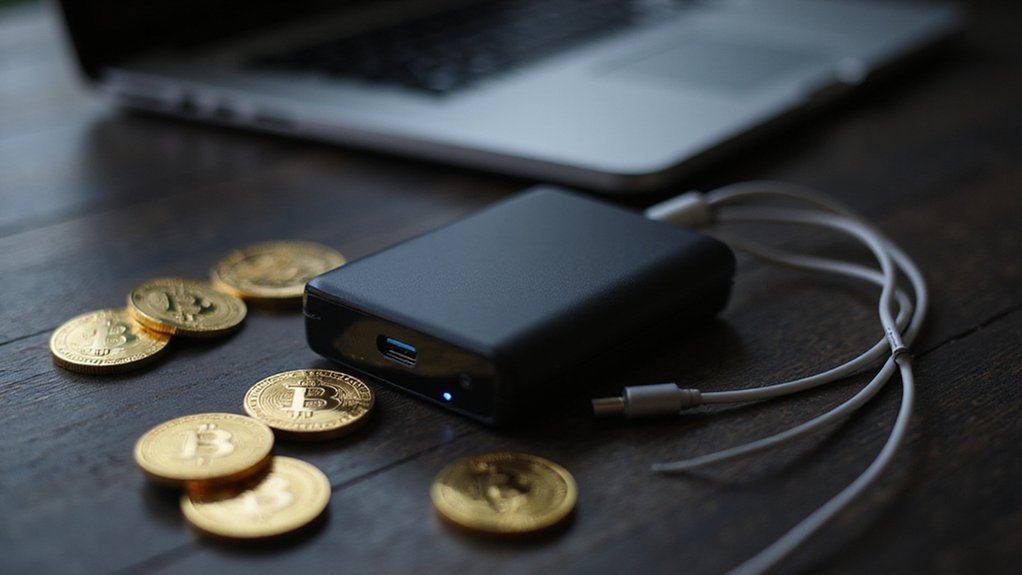Cryptocurrency protocol upgrades function as blockchain networks’ evolutionary mechanism, enabling developers to propose enhancements through governance systems where token holders vote on implementations. These upgrades manifest as either hard forks—requiring universal node participation to prevent chain fragmentation—or soft forks that maintain backward compatibility (Bitcoin’s Taproot upgrade exemplifies this gentler approach). While upgrades promise improved scalability, security, and functionality, they carry inherent risks of network splits and vulnerabilities when coordination fails, making the governance process as critical as the technical improvements themselves.

The evolution of cryptocurrency networks presents a peculiar paradox: systems designed to operate without central authority must somehow coordinate wholesale changes across thousands of independent nodes scattered globally. Protocol upgrades—modifications to the fundamental rules governing blockchain networks—require a delicate orchestration that would make symphony conductors weep with envy.
The initiation process typically begins when developers or community members submit proposals for protocol changes, whether to fix bugs, enhance features, or improve efficiency. These proposals then navigate voting mechanisms involving token holders or specialized governance bodies. The Internet Computer’s Network Nervous System exemplifies this approach, requiring majority approval before any modifications take effect.
Once approved, the execution mechanism becomes fascinatingly complex. Nodes must download and install new software versions while maintaining perfect synchronization—a feat roughly equivalent to changing a car’s engine while driving at highway speeds.
The Internet Computer employs an orchestrator process that queries for updates, subsequently feeding them to replica processes that maintain the blockchain. This coordination guarantees upgrades activate simultaneously across all subnet nodes at predetermined block heights or epoch boundaries.
The distinction between hard and soft forks proves critical here. Hard forks demand universal node upgrades or risk catastrophic chain splits, while soft forks maintain backward compatibility, allowing non-upgraded nodes to continue functioning (though perhaps feeling slightly left behind). Bitcoin’s Taproot upgrade demonstrated soft fork elegance, enhancing transaction efficiency without forcing universal adoption.
Coordination remains paramount—simultaneous version switching prevents network fragmentation that could otherwise transform a unified blockchain into competing factions. The Internet Computer divides consensus into epochs, with registry versions referenced in each block for transparency, guaranteeing all nodes agree on the latest protocol version before proceeding. Accidental forks occasionally occur when two miners simultaneously produce competing blocks, though networks typically resolve these situations by adopting the longer chain.
These upgrades deliver tangible benefits: improved scalability, enhanced security features, and new functionalities like advanced smart contracts or privacy options. Taproot allowed Bitcoin to process transactions more efficiently while addressing existing vulnerabilities. The upgrade incorporated Schnorr signatures alongside Bitcoin’s existing ECDSA cryptographic system to enable signature aggregation and batch verification capabilities. Many protocol modifications operate across the consensus layer, which serves as one of the fundamental hierarchical structures maintaining blockchain integrity and functionality.
Yet risks persist. Failed coordination can trigger network forks, rushed upgrades may introduce security vulnerabilities, and community disagreements occasionally spawn contentious splits. Governance mechanisms involving decentralized voting and stakeholder participation have emerged as essential safeguards, with transparent proposal systems building the trust necessary for smooth upgrade adoption across decentralized networks.
Frequently Asked Questions
How Long Does It Typically Take for a Protocol Upgrade to Be Fully Implemented?
Protocol upgrades typically require two to four years from initial consensus-building to full network implementation.
Bitcoin’s conservative approach—exemplified by Taproot’s multi-year journey—prioritizes security over speed, while Ethereum’s upgrades (though supposedly more ambitious) face similar timelines due to technical complexity.
The process involves months of developer consensus, extensive testing phases, and gradual network adoption.
Smaller networks naturally move faster, though one wonders if haste makes waste in decentralized systems.
Can Protocol Upgrades Cause My Existing Cryptocurrency Holdings to Lose Value?
Protocol upgrades can indeed trigger value fluctuations in existing holdings, though the mechanisms prove fascinatingly indirect.
While upgrades don’t alter token quantities or balances—one’s digital assets remain numerically intact—market perception drives price volatility as traders react (often irrationally) to technical changes.
Failed implementations can devastate confidence, while successful enhancements may boost long-term adoption.
The cruel irony? Technical improvements offer no guarantee of immediate appreciation, leaving investors perpetually uncertain.
What Happens if Miners or Validators Refuse to Adopt a New Protocol Upgrade?
When miners or validators refuse protocol upgrades, blockchain networks fork into competing versions—one following old rules, another embracing new protocols.
This creates security vulnerabilities as hash power divides, potentially enabling double-spending attacks.
Market uncertainty follows, with token holders receiving duplicate coins across chains.
The majority typically determines the dominant network, while holdouts face reduced profitability and miss critical security patches, creating an economic incentive toward eventual compliance.
Are There Any Fees Associated With Participating in a Protocol Upgrade Process?
Protocol upgrades themselves don’t impose direct fees on participants, though the underlying economics prove more nuanced.
Validators and miners bear computational costs for implementing new code, while users face standard transaction fees during any upgrade-related activities.
The real expense lies in coordination—exchanges pause operations, developers audit extensively, and node operators scramble to update infrastructure.
Ironically, the “free” upgrade often costs the ecosystem millions in preparation and potential downtime.
How Can Individual Users Prepare Their Wallets Before a Major Protocol Upgrade?
Individual users should backup private keys in multiple secure locations, upgrade wallet software to the latest version, and avoid large transactions during the upgrade window.
Smart holders monitor official announcements while testing wallet recovery processes beforehand.
Hardware wallets provide additional security during changes, though one wonders why users consistently ignore such basic precautions until panic sets in.
Post-upgrade verification of balances and functionality remains essential—assuming everything works as promised.









